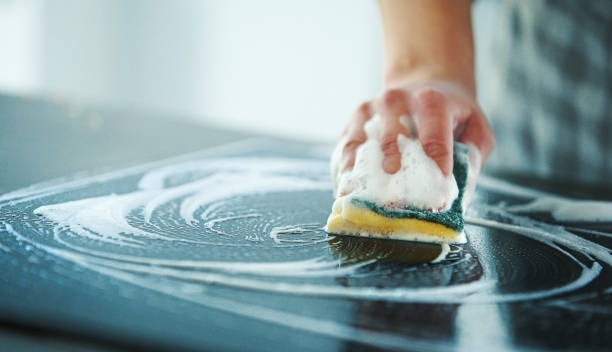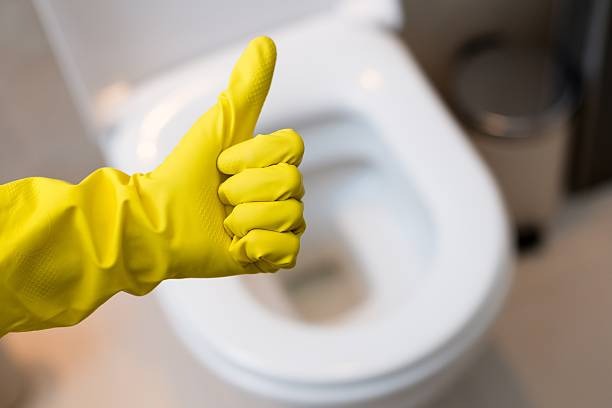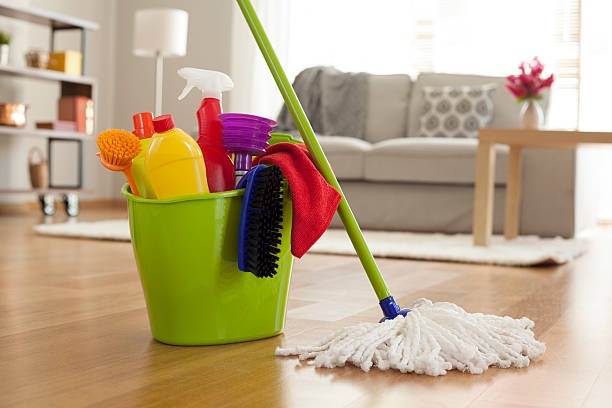Introduction
Keeping a clean and organized living space is not only visually appealing but also essential for maintaining a healthy and comfortable environment. While regular cleaning is important, there are times when a more thorough approach is necessary—a deep cleaning session. In this guide, we will explore the top five tips you need to know to master the art of deep cleaning.
Tip 1: Decluttering and Organizing
Before diving into deep cleaning, it’s crucial to declutter and organize your space. This step sets the foundation for an effective cleaning process. Decluttering not only creates a sense of spaciousness but also makes cleaning easier and more efficient. Start by sorting and categorizing your belongings. Decide what items to keep, donate, or discard. Then, organize the remaining items in a logical and systematic manner, using storage solutions such as boxes, bins, or shelves.
Tip 2: Creating a Cleaning Schedule
Deep cleaning can be overwhelming, especially if you try to tackle everything at once. That’s why creating a cleaning schedule is essential. A cleaning schedule helps you distribute your cleaning tasks over time, making them more manageable and less stressful. Begin by assessing your cleaning needs and identifying the frequency of each task. Allocate specific time slots for different cleaning activities and establish a routine that suits your lifestyle. Consistency is key to maintaining a clean and organized space.
Tip 3: Tackling Specific Areas
Deep cleaning involves paying attention to specific areas of your home that often require extra care. Let’s explore some tips for tackling common areas.
A. Kitchen

The kitchen is a hub of activity and tends to accumulate grease, grime, and food residues. Start by cleaning appliances, countertops, and surfaces using appropriate cleaning solutions. Deep clean the refrigerator by removing all items, discarding expired food, and wiping down shelves and drawers. Similarly, clean the oven thoroughly by removing burnt-on food particles and greasy residue.
B. Bathroom

Bathrooms are susceptible to moisture and can develop mold and mildew over time. Clean the toilet, sink, and shower using disinfectant cleaners. Pay attention to corners and crevices where mold can grow. Eliminate mold and mildew using specialized bathroom cleaners or natural remedies like vinegar and baking soda.
C. Bedroom

In the bedroom, focus on cleaning the mattress and bedding. Vacuum the mattress to remove dust mites and allergens. Launder your bedding, including sheets, pillowcases, and comforters, on a regular basis. Take the opportunity to organize closets and drawers, donating or discarding items you no longer need.
D. Living Room

The living room is a high-traffic area that accumulates dust and dirt. Vacuum and clean upholstery to remove dust, pet hair, and stains. Dust and polish furniture to restore its shine and appeal. Pay attention to neglected areas like behind furniture and underneath cushions.
Tip 4: Using Effective Cleaning Techniques
To achieve optimal results during deep cleaning, it’s essential to use effective cleaning techniques and tools. Gather all the necessary cleaning supplies before you begin. Different surfaces may require specific cleaning methods. Understand the difference between dry cleaning and wet cleaning and choose the appropriate method for each task. Explore natural cleaning solutions and DIY cleaners that are safe and eco-friendly. Make sure to use cleaning tools and equipment correctly to maximize their effectiveness.
Tip 5: Paying Attention to Forgotten Areas
During deep cleaning, it’s easy to overlook certain areas of your home that accumulate dirt and grime over time. Pay special attention to these forgotten areas:
A. Cleaning High-Touch Surfaces
Frequently-touched surfaces, such as doorknobs, light switches, and handrails, harbor bacteria and viruses. Disinfect these surfaces regularly to maintain a hygienic environment.
B. Deep Cleaning Carpets and Rugs
Carpets and rugs trap dirt, dust, and allergens. Vacuum them regularly, and consider deep cleaning them using a steam cleaner or hiring a professional carpet cleaning service.
C. Window Cleaning and Maintaining Blinds
Windows and blinds can accumulate dust and grime. Clean windows inside and out using appropriate glass cleaners. Dust and wipe blinds using a microfiber cloth or a blind cleaning tool.
D. Dusting and Cleaning Light Fixtures and Ceiling Fans
Over time, light fixtures and ceiling fans gather dust. Remove light fixtures and wash them with warm, soapy water. Use a ladder and a duster to clean ceiling fan blades thoroughly.
Conclusion
Deep cleaning is a crucial part of maintaining a clean and healthy living environment. By following the top five tips discussed in this guide, you can tackle deep cleaning with confidence and efficiency. Remember to declutter and organize, create a cleaning schedule, focus on specific areas, use effective cleaning techniques, and pay attention to forgotten areas. With these tips in mind, you’ll be well on your way to a sparkling and pristine home. Happy cleaning!

